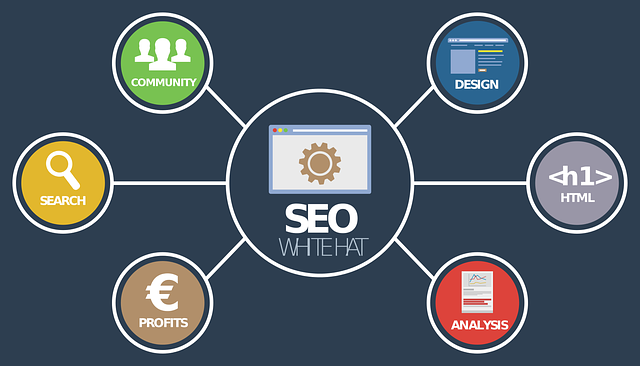The rise of "ghost kitchens," powered by advanced AI delivery driver routing systems, has dramatically transformed the food delivery industry. These virtual brands, operating from centralized hubs, offer diverse cuisines without physical stores. AI optimizes delivery routes using real-time data and algorithms, reducing wait times, enhancing satisfaction, and enabling significant operational efficiencies. This has led to global expansion, cost optimization, and improved performance tracking for ghost kitchen businesses. AI systems provide insights into order fulfillment, customer satisfaction, demand prediction, and dynamic routing, allowing brands to stay competitive in the dynamic food delivery sector.
In the dynamic landscape of food delivery, AI ghost kitchen virtual brands have emerged as a game-changer. This innovative concept leverages advanced technology to streamline operations and enhance customer experiences. Understanding and tracking their performance is crucial for success in this digital age. This article explores the rise of AI ghost kitchens and delves into the vital role of AI delivery driver routing systems in optimizing efficiency. We’ll uncover key metrics and strategies to effectively track virtual brand performance, ensuring long-term success in a bustling market.
- Understanding AI-Powered Ghost Kitchen Concepts and Their Rise
- The Role of Delivery Driver Routing Systems in Optimizing Performance
- Tracking Virtual Brand Performance: Metrics and Strategies for Success
Understanding AI-Powered Ghost Kitchen Concepts and Their Rise

The rise of ghost kitchens, powered by advanced AI delivery driver routing systems, has transformed the food delivery landscape. These virtual brands, operating from centralized kitchen hubs, offer a diverse range of cuisines without the need for physical storefronts. By leveraging artificial intelligence, these concepts optimize delivery routes, reduce wait times, and enhance customer experiences. The efficiency gains from AI-driven operations have attracted significant interest from both investors and consumers alike, contributing to the rapid expansion of ghost kitchen networks across cities worldwide.
The Role of Delivery Driver Routing Systems in Optimizing Performance

In the dynamic landscape of ghost kitchens, where virtual brands rely heavily on efficient delivery services to thrive, AI delivery driver routing systems play a pivotal role in optimizing performance. These innovative technologies utilize sophisticated algorithms and real-time data to map out the most time-efficient routes for delivery drivers, minimizing delays and ensuring timely food delivery. By analyzing factors such as traffic conditions, restaurant locations, and customer demands, these systems help reduce response times, increase customer satisfaction, and ultimately drive business growth.
Efficient routing isn’t just about saving time; it’s also about cost optimization. AI-driven systems can identify the most economical routes, considering fuel consumption and driver workload, leading to significant savings for ghost kitchen operations. This strategic approach not only enhances operational efficiency but also contributes to a more sustainable and financially robust business model, allowing virtual brands to better compete in the highly competitive food delivery sector.
Tracking Virtual Brand Performance: Metrics and Strategies for Success

Tracking Virtual Brand Performance: Metrics and Strategies for Success
In the dynamic landscape of ghost kitchens, where brands operate virtually without physical storefronts, AI delivery driver routing systems play a pivotal role in performance tracking. These advanced technologies not only optimize the distribution of orders to multiple restaurants but also provide real-time data on key metrics like order fulfillment time, delivery accuracy, and customer satisfaction. By analyzing these data points, ghost kitchen operators can gain valuable insights into brand performance, identify bottlenecks, and make data-driven decisions to enhance operational efficiency.
Successful tracking strategies involve setting clear performance indicators (KPIs), such as average order value, conversion rates, and repeat customer engagement. AI algorithms can help in monitoring these KPIs, predicting demand patterns, and dynamically adjusting routing strategies to ensure timely deliveries. Additionally, integrating customer feedback mechanisms through surveys or social media analysis further enriches the data pool, allowing brands to tailor their services to meet evolving consumer preferences. This holistic approach ensures that ghost kitchen virtual brands remain competitive, agile, and aligned with market demands in the ever-changing food delivery sector.
AI-powered ghost kitchen concepts have disrupted the food delivery landscape, and effective performance tracking is key to their success. By leveraging advanced algorithms and data analytics, these virtual brands can optimize operations, enhance customer experiences, and drive business growth. Implementing robust AI delivery driver routing systems allows for efficient logistics management, ensuring timely deliveries and cost-effectiveness. Through comprehensive performance tracking metrics, ghost kitchen operators can identify trends, make data-driven decisions, and continually improve their brand’s virtual presence in the competitive market.
